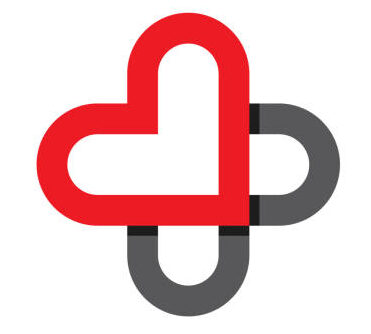This Is How Sex Workers Are Using Streaming Services During the Pandemic

Almost a year into the COVID-19 pandemic in North America, it’s safe to say every industry across the board has been affected, with many pivoting to adapt their revenue streams to our new reality. We’ve seen retail stores go almost entirely contactless, small restaurants focus on take-out and delivery, and boutique gyms and fitness studios shift to online and virtual workouts. The media, and individuals on social media, have rallied around these businesses, with hashtags like #supportlocal blowing up, especially around the holiday season. But there are many other small businesses and sole proprietors that have been overlooked—likely because historically they’ve been ostracized.
If there’s one industry that’s *really* had to get creative with how it adapted during the COVID-19 pandemic, it’s arguably sex work. In 2020, with many sex workers unable to continue in-person business as usual for their own health and safety as well as their clients’, there’s been a massive shift to online streaming platforms that specifically host X-rated content, such as OnlyFans.
ICYMI, OnlyFans is a paid online streaming service that allows individuals to upload curated content, and patrons to follow and subscribe to their favourite creators. Content on the platform runs the gamut from exercise-related to intimate. And nine months into the rolling lockdowns in North America, these streaming services appear to be growing in popularity to the point that they’ve hit the mainstream, with several high-profile celebrities, like Bella Thorne and Tyler Posey *also* using OnlyFans to make an income with sexually-themed content. (In November, hunk Michael B. Jordan also announced he’d be joining OnlyFans, but with the money going towards charity.)
With lockdowns still in effect and vaccines only just starting to be administered, sex workers may very well be using these platforms for a while to come, and maybe even permanently to some degree. Here’s how sex workers have been using streaming services during the pandemic, and how it’s changing the sex work industry beyond 2020.
COVID has had a massive effect on the sex work industry
From the moment rumblings of the COVID-19 pandemic began back in March of 2020, those in the sex work industry were worrying about the effects it would have on them and their source of income. “There was a lack of understanding of what was going to happen, things were changing every day, but as we were heading toward more of a lockdown situation, it became clear that it was going to affect sex workers’ income very broadly and pretty much across the board,” says Lyra McKee, Community Co-Executive Director of PACE Society, a peer-driven organization for current and former sex workers in Vancouver. For sex workers who operate with clients in person, there was an understandable fear around staying safe from COVID, for all parties involved. Knowing whether to continue with their work wasn’t the easiest decision to make. “During the shutdown, people generally wanted to follow health directives and stay safe and healthy,” McKee says. “But for people whose only source of income is sex work, it’s really a decision of whether to stay healthy and follow health directives or to continue making any money by doing sex work.”
“For many [sex workers], the choice is to work during the pandemic or starve,” says Jelena Vermilion, Executive Director of Sex Workers Action Program (SWAP) Hamilton. The prospect of unemployment was especially daunting for those in the industry, considering the fact that it’s one that falls into the grey area of accessing government benefit programs.
In March 2020, the Canadian government introduced the Canada Emergency Response Benefit (CERB), an assistance program meant to aide Canadians who lost income as a result of the COVID-19 pandemic. While sex workers were *technically* able to access CERB and EI (Employment Insurance), there were several barriers in their way, including the fact that many did not meet the income requirement in the previous year. (This is especially applicable to those in the industry who use sex work as additional income or to supplement their social assistance or disability support, Vermilion says.) In addition, due to the fact that sex work in Canada is still criminalized, “any contact with government or other official bodies risks criminalization or in some cases, deportation,” Vermilion says. And that includes filing taxes. Meaning that, although sex workers can technically apply for these assistance programs, by failing to take these factors into account “the government emergency plans have explicitly excluded this group of workers,” Vermilion says. “It’s infuriating to have our work criminalized, to be pushed farther away from community and other social supports, to only be denied further help which is needed due to the imposed disadvantage,” she continues.
Read this next: Here’s Why Sex Workers’ Rights Are a Big Issue In This Election
And that’s a big issue. In much the same way that a loss of employment would detrimentally affect someone in another industry, “without sex work these already vulnerable people will not have enough money to eat and pay rent,” Vermilion says.
Streaming services have picked up the slack
Without any assistance to lean on, workers in the sex industry have had to think on their feet and adapt in some pretty creative ways. In places like Portland, Oregon, strip clubs have established drive-through services as a way to continue to bring in revenue while following social-distancing guidelines. But that’s not the only way the industry is pivoting, with sex workers of all varieties moving to the one place they know demand will always exist: the internet. “I definitely see people moving online,” says Kate Sinclaire, a feminist pornographer from Winnipeg, and the founder of Ciné Sinclaire. “Especially any sex worker friends that normally see people face-to-face.” While Sinclaire herself has always worked online in some way over her 15-year career in the industry, starting out on what she calls a “nudie photo website,” cherrystems.com, and evolving into her current career as a director of feminist porn, during the pandemic she’s seen colleagues and friends in the industry make the jump from IRL to virtual, including in some ways that may surprise people. “There’s one person I know in Maryland, and she did this virtual strip club,” Sinclaire says. “And so now it’s twice a week, and it’s a lot of queer [people] and various body types.”
Madison Winter, a Toronto-based sex worker, has also seen the effects of COVID-19 on her income. With many of her companionship clients coming from the United States, Winter says that the U.S.–Canada border restrictions mean she’s been unable to see them in person for several months. “Work is few and far between,” she says. While Winter describes how many individuals in the sex work industry have chosen a middle ground due to COVID—meaning they either work significantly less and/or quarantine between bookings—she’s turned to online platforms as another revenue stream. In April of this year, Winter made the decision to join OnlyFans, hoping to diversify her revenue stream with content for the monthly subscription service, creating a variety of diverse content for her subscribers and their needs. “My OnlyFans content typically ranges from wholesome, day-in-the-life snapshots to sensual, and sometimes erotic, imagery and videos,” she says. “I may post a video of me dancing around my kitchen—poorly—to Madonna, or share a vulnerable and intimate part of my personal sex life.”
And she’s not alone. Per data from the company, in the first few months of the pandemic, OnlyFans saw a massive increase in sign-ups for both users and creators, with the company reporting 3.5 million new accounts in March; 60,000 of which were reportedly creators. If that doesn’t sound like a lot, it should, because these numbers marked an increase of 75% from the previous month.
While OnlyFans isn’t explicitly for the sex work industry, it’s the ideal platform for sex workers to operate on, with the site featuring more lax rules around nudity, as well as providing creators with the ability to “lock” their messages, so subscribers have to pay to view their responses, and create custom content. This allows creators to charge for specific videos and desires.
And the sex workers who have moved online seem to love it, specifically for the safety that it provides individuals who may typically have to place themselves in more high-risk situations due to their line of work. “I think definitely one of the positives is that workers have control of their own channels,” Sinclaire says of these platforms. “They don’t have to wait for some producer to come along who might take advantage of them, they can just put up their own stuff online and do exactly what they want to do in the way that they want to.”
Mikaela Spielberg, daughter of director Steven Spielberg, who started out in the sex work industry in October of this year, was drawn to the platform ManyVids for this reason. Whereas OnlyFans is used by, but not explicitly geared towards sex workers, ManyVids is a female-founded adult entertainment platform, so safety concerns are prioritized even more. “ManyVids’ reputation for creating a safe haven that champions sex workers to become successful entrepreneurs is what attracted me to the platform from the beginning—they’ve made a major shift in making entertainers feel in control of what they put out and that’s important,” she says.
But it’s not a perfect solution
Shortly after services like OnlyFans started gaining popularity during the pandemic, the streaming site and its patrons were thrust into the spotlight for negative reasons. In August, actor Bella Thorne announced that she was starting an OnlyFans account. In one day of having her account up-and-running, Thorne reportedly made $1 million. In two days, she claims to have made over $2 million in subscriptions. The issue? Thorne royally fucked up revenue for actual sex workers on the platform. After reportedly being charged $20 per subscription and allegedly charging $200 for “pay-per-view” nude photos, patrons of Thorne’s account were upset to find that the actor wasn’t in fact posting nude content, but rather suggestive photos and videos of the creator fully clothed. (It’s important to note that, of course, Thorne should be able to do what she wants with her body, including deciding how much of it she wants to share publicly; the issue is that fans felt they were sold one thing, and the account didn’t deliver.) Because of this, people requested refunds from OnlyFans in droves, which led to the streaming service placing restrictions on how much *other* creators could charge—limiting the earning potential for actual sex workers—as well as extending creators’ pay out windows. In some countries, creators now have to wait up to 30 days to receive payment, as opposed to the original seven. Thorne has since apologized.
Read this next: 3 Canadian Sex Workers on What Their Jobs Are Really Like
I wanted to bring attention to the site, the more people on the site the more likely of a chance to normalize the stigmas, And in trying to do this I hurt you. I have risked my career a few times to remove the stigma behind sex work, porn, and the natural hatred people spew…
— BITCHIMBELLATHORNE (@bellathorne) August 29, 2020
“To me, it’s gross, ” Sinclaire says of celebs using sites like OnlyFans. “When people use this [to make] a living and this is their money and then some celebrity comes in and says, ‘Oh, I’m going to do this because it seems fun,’ and actually ruin thousands of lives?” Especially because, as Sinclaire points out, sex workers and the platforms that cater to them already have so many issues with payment. “Credit cards are 90% of the problems that we interact with in the porn world,” she says. For example, on her own site, Sinclaire says she has to use one of two credit card providers, because no others will work with them. And when they do find a credit card provider who’ll work with them, their rates are insanely high. “Every time that someone makes a purchase, the fee is 18% from that company,” she says, “whereas a regular store would be somewhere between 3 to 5%.” This is due to the rate of chargebacks credit card companies receive from websites that provide pornography and sex work. Meaning, people may purchase porn, and then when it comes through on their credit card statement, deny they bought it and have their company cancel the charge. “We make 80 cents on the dollar just to start,” Sinclaire says. “So when that Bella Thorne thing happens, it ends up ruining credit card processing on OnlyFans, which ruins people’s livelihoods.”
Since Thorne other celebrities (and influencers) like Teen Wolf‘s Tyler Posey and internet boyfriend Michael B. Jordan have started (or have said they are starting) OnlyFans accounts as another revenue stream, many people online have pointed out that they completely fail to recognize that IRL sex workers *need* OnlyFans as an income stream to live, not just diversify their million-dollar empires. After Beyoncé first shouted out OnlyFans in her April remix of “Savage,” the site has become a pop culture touchstone, synonymous with being sexy, which makes it easier to make light of, with influencers and celebs alike captioning photos and posts with tongue in cheek comments about creating an OnlyFans account.
“It very much gets pitched in that way like, ‘Oh, maybe I’d do porn,’ Sinclaire agrees. “And maybe you would, but some people actually do. So let’s think about how our actions are affecting them.”
And beyond the celebrity influence making streaming services inaccessible, the fact remains that online sex work—independent of these celebs—isn’t actually that accessible to everyone. “I know a lot of people have moved to online work,” McKee says, “[but] I know that some people had to keep working [in person], especially people who experience multiple levels of marginalization or face housing precarity or were already working entry-based sex work and didn’t have resources to move online. Some people didn’t really have much of a choice in that area.” Because while it may seem like an easy pivot, it can actually be a luxury to have the choice to move online and onto streaming platforms. “Online work requires an indoor space that’s private, and many of the sex workers we work with don’t have access to any of that, much less the supplies that you have to accumulate such as a camera and a computer,” McKee says. As well, making the move from in-person to online requires obtaining a different clientele in an already very saturated market, Vermilion adds. “So that’s just not a possibility for a lot of people,” McKee concludes.
So, what does the future of sex work look like?
Despite the barriers to this line of work, Spielberg, Sinclaire and Winter all agree that the surge in familiarity around streaming services like OnlyFans and ManyVids is positive in regards to destigmatizing public perceptions of sex work. “No press is bad press, in a way,” Sinclaire says.
But, that doesn’t necessarily mean that these online platforms will be the *only* way of the future for sex work after the pandemic ends. (While it may not feel like it right now, yes the pandemic will at some point be over.) Because, things will go back to normal—whatever that may be. “We were supposed to get back on set in early October and then one of my performers contacted me a day before and said ‘I have a sore throat,” so we had to cancel,” Sinclaire says of getting back to in-person work. “But it will come back as the world will eventually go back to some state similar to what it was before.”
Read this next: These Organizations Are Helping to Improve the Lives of Women
And until then, she’s embracing these platforms for what they’re doing. “I think they do better than porn, honestly,” Sinclair says. “You can be exactly who you are and people might pay you for that. That’s kind of great.”
For Winter, getting online has helped to diversify her revenue stream and create stability and security she may not find in face-to-face sex work—regardless of the pandemic. “As a sex worker, I have no vacation pay, sick pay, insurance or otherwise,” she says. “If I’m unwell for a month [as she was last September following an emergency surgery], I have no income.” While she says OnlyFans doesn’t fully cover her expenses, online sex work allows her to generate passive revenue flow and continue earning even if she’s not able to work right at that moment.
As for the sex work industry in Canada as a whole, there’s still a lot more work to be done when it comes to protecting those in the industry, both during the pandemic and afterwards. “If sex workers aren’t able to fully continue working, then we definitely need to see governmental relief that’s more accessible and low barrier in order for sex workers to be safe and to meet their daily needs and necessities,” McKee says.
“[And] sex workers definitely need to see decriminalization at the federal legal level,” she continues. “Decriminalization would go a long way toward making sex workers safer, happier, healthier people in their work and it would enable us to unionize, which would be really important for sharing information, sharing best practices and ensuring workplace rights.”




